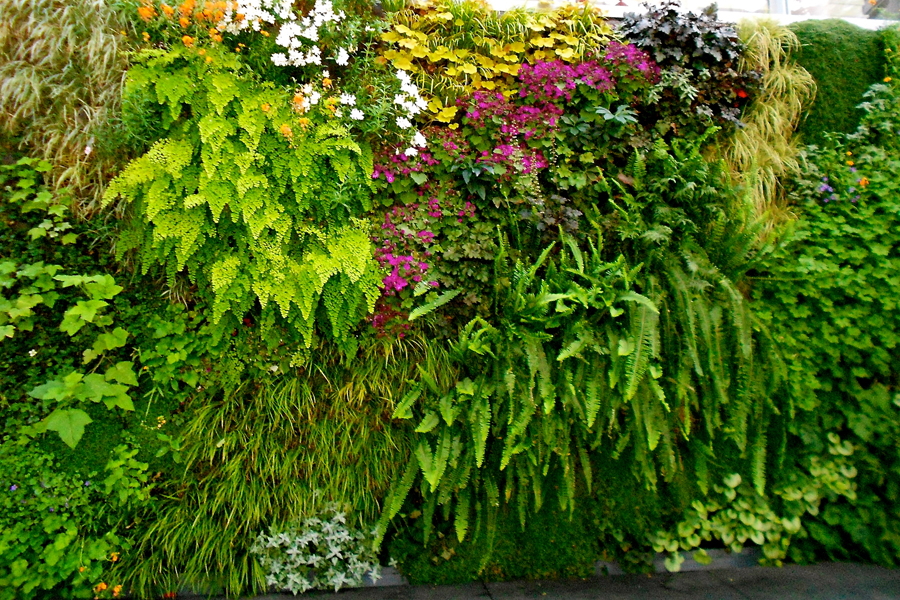Notes from the Garden: Vertical Gardens

As long as you have a blank wall or a bare fence, you can have a beautiful vertical garden with herbs, vegetables, annual and perennial flowers. A vertical garden can expand the horticulture horizon far beyond ground level and enhance one’s love of being surrounded by nature. I will detail some of my favorite vertical garden setups, all of which are guaranteed to inspire and amaze.
But first, the basics of vertical gardening: like all landscape designs, these gardens benefit most from proper planning ahead of time and knowledge of the resources you will be utilizing.

Plants that can cohabitate happily in a mixed vertical garden include succulents, sedums, colorful Coleus, and several types of grasses, such as Carex Grass. Different ferns, like the Japanese painted fern, and annuals, such as Lobelia or Million Button Petunias, can be combined into a single variety planted in a group of pockets to form a vertical garden that’s bursting with bright colors.
Plants can be sold in a variety of garden ready containers depending on your specific needs or goals. Flowers, vegetables, herbs, and vines are planted in pouches composed of recycled material. These pouches are sold both individually and in rows of 3, 5, or more, and can last for 20 years. Metal grommets make them easy to attach to a wall with screws.
The average 15×24” pocket, which can hold up to 20 lbs of soil a piece, is best for holding annuals, perennials, and small vegetables. Whether planted in a sunny site or an area of dry shade, the soil should be supplemented with soil conditioners, fertilizers, and peat moss. Using the right soil from the start will not only permit the plants to thrive in a proper potted environment, but will also sort out any drainage issues. Succulents grow best in drought-tolerant cactus mix, while flowers and vegetables fare better in a rich mix soil.
Besides pouches and pockets, you can also compose your vertical garden with trays, which are similar to nursery flats. These rectangular plastic trays are divided into planting compartments with bottom holes that allow for drainage and aeration. Trays come with brackets for mounting, and are best suited for smaller perennials, annuals, shallow root succulents, and vegetables such as lettuce.
Watering could be done in several different ways in order to meet your garden’s needs. If plants are within easy reach, they can be watered manually with a hose or watering can. Larger or taller gardens will require an automatic gravity irrigation system. The drip lines run through the open channels in the backs of the pockets or trays. The water falls into the top chamber before trickling down into each individual cell. This process also replenishes the moisture mats, allowing the roots of the plants to absorb water from both the soil and the moisture mats.
The look of a well-designed and healthy vertical garden can be extraordinary. The variety of color and textures available can dramatically transform and beautify any environment. Different themes can be chosen according to plant selection, natural vs. organic, and flower types. The aptly named art of vertical gardening can inspire high hopes for the overall sustainability of your landscape, and is most definitely “on the rise”.
Landscape Designer, Writer, and Lecturer Frederico Azevedo is the CEO of Unlimited Earth Care, Inc. which has been providing high quality landscape design and maintenance to the Hamptons for over 20 years. For more information, call our office at 631-725-7551, or visit us on the web at www.unlimitedearthcare.com




